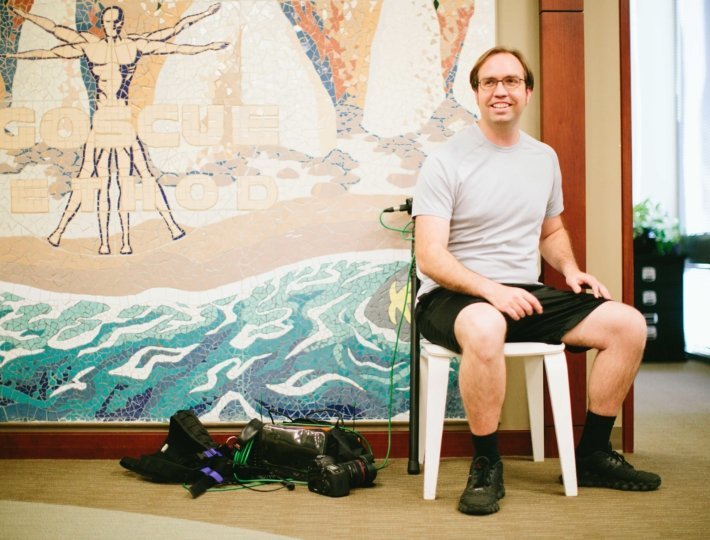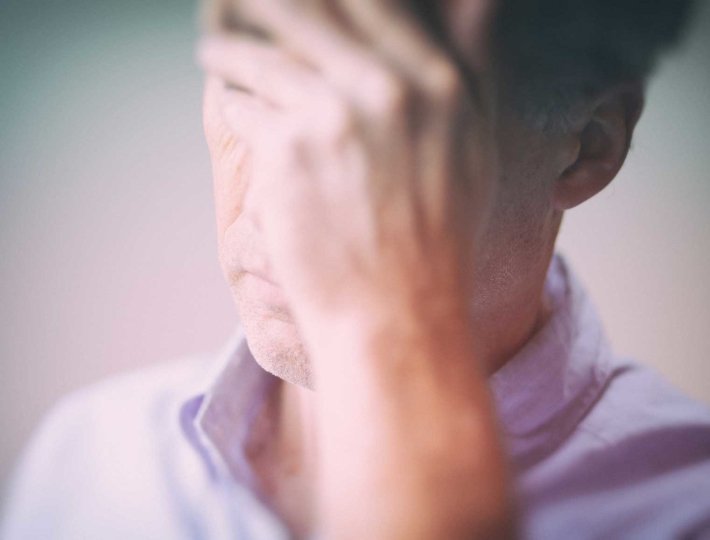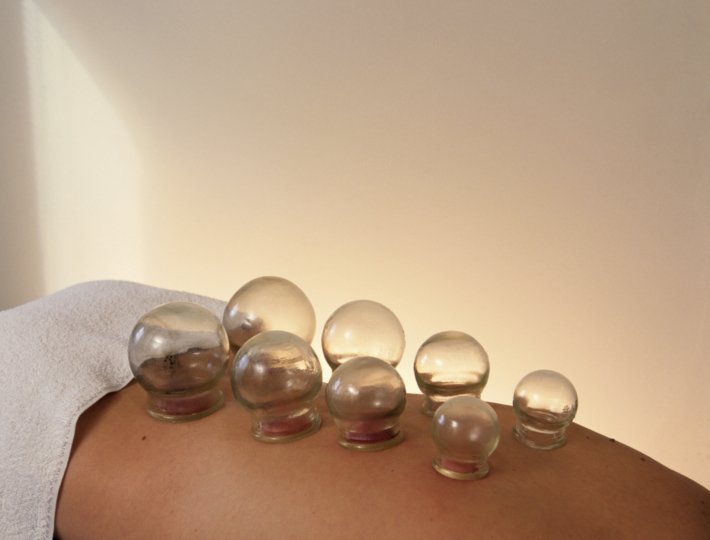In the unending quest for pain-free living, people have long turned to a slew of tried-and-true remedies to soothe their mental and physical woes, from yoga and meditation to Western and Eastern medication. Among the most well-respected, Eastern-based, mind-body practices is Traditional Chinese Medicine (TCM), which includes acupuncture. For more than 2,500 years, this holistic treatment has been known to effectively address health concerns and promote wellness, and recent evidence supports the practice’s healing powers. One 2012 review of 29 studies published in the Archives of Internal Medicine, for example, found that acupuncture beat out over-the-counter pain relievers and other standard measures of treatment in relieving chronic pain. But how exactly does acupuncture work? Here’s what you need to know before you go under the needle.
The Point of the Practice
Needle phobes are likely familiar with acupuncture’s main tool: fine, disposable needles no thicker than a few strands of hair. Practitioners use them to stimulate so-called acupoints all over the body, says Alexandra Vander Baan, a doctor of acupuncture, and owner of Yintuition Wellness in Boston, Massachusetts. These acupoints, which total 361 across the skin’s surface according to the WHO Standard Acupuncture Point Locations in the Western Pacific Region, are used to bring energy back throughout the body where it might be imbalanced.
Break a bone or burst an appendix, there’s no better choice than allopathic (or mainstream) medicine, says Vander Baan. But when it comes to some common conditions such as respiratory diseases, digestive diseases, and chronic pain, acupuncture is incredibly effective—and arguably more successful in delivering results, she says. A key difference between conventional medicine and a holistic treatment like acupuncture is that the latter addresses those interconnected systems of the body, plus the underlying causes of concerns, including inflammation or hormonal imbalances, she says. “Today, the overwhelming majority of symptoms we experience are systemic—affecting the whole body, not just a single organ or tissue,” she adds.
Related: The Magic of Dry Needling for Pain Relief
How does acupuncture work? In a typical session, a patient will discuss their concerns with the acupuncturist who will then insert needles in strategic areas of the body, depending on the patient’s needs. Once the needles are in place, the patient will continue to lie comfortably on the treatment table for anywhere from five minutes to an hour. Most people report to feel very relaxed during treatment, and generally experience no discomfort from the needles. Research suggests acupuncture encourages the body to release feel-good endorphins. Other studies find the practice improves circulation, which can help the body repair itself and mitigate both pain and perception of pain, says Vander Baan. More studies are needed on the topic.
While some science suggests acupuncture can fend off low back pain or headaches, other research shows that these outcomes are minimal—nothing more than a placebo effect. However, many current clinical guidelines for chronic pain, chemotherapy, anxiety and depression, and labor pain do feature acupuncture as a recommended treatment, and that means something, Vander Baan says. The World Health Organization even lists 28 different medical conditions that can be treated, at least in part, by acupuncture. The National Institutes of Health agrees, stating that the needles are a therapeutic intervention for everything from menstrual cramps to nausea brought about by pregnancy or chemotherapy.
Is Acupuncture Worth Trying?
Acupuncture’s devotees range from dedicated yogis and weekend warriors to athletes and stressed-out 9-to-5ers. The clientele is diverse because so, too, are the uses for acupuncture. Fatigue, anxiety, headaches, low back pain, constipation—all of these can be signs of an underlying imbalance in your body, Vander Baan says. “One of the advantages of the TCM is that we can detect and treat sub-clinical symptoms before they become full-blown medical conditions,” she says.
Being receptive to the medicine is key to success. “This isn’t to say those who ‘don’t believe in it’ won’t benefit,” says Vander Baan. But the placebo effect plays a role in all therapeutic interventions—not just acupuncture, she says. One 2014 study published in Science Translational Medicine found that half of a migraine drug’s power came from simply thinking it would work, even when people were taking a placebo. In addition to embracing positive results, it’s important to keep your overall well-being in check, too. Those who take an active role in their health will likely see the most boons from the practice. After all, a healthy diet and lifestyle help support and sustain progress, Vander Baan says.
Paying for the Pinch
Complementary treatments like acupuncture used to be far from complimentary. Data from the 2007 National Health Interview Survey found that 83 million Americans spent $33.9 million on alternative medicine in just one year. Ouch. But Vander Baan says that today she sees more insurance companies footing the bill for time on the table.
“The landscape of insurance coverage is changing because of an increasing demand for complementary therapies,” she says. In fact, research from consumer insights firm Nielson found millennials are more likely to use acupuncture and herbal remedies than other generations. An estimated 3 million Americans have signed up for acupuncture, especially since emerging research has demonstrated it’s safe and cost-effective. And more are welcome to try it: About 54 million Americans are eligible for acupuncture covered by the Affordable Care Act, reports the Journal of Integrative Medicine, published in 2014.
Not sure if you’re covered? Ask your insurance provider, and get the scoop (here’s a list of go-to questions to ask) before you book an appointment. Some companies may cover your session if you have a prescription and the treatment is pre-approved, or only if you go to a doctor in-network. If you’re not covered, you’re looking at fees from $60 to $120 per session, according to AcuFinder.com. Also worth noting: If the practice works for you, it could help you cut costs down the road if you can avoid other expensive and invasive interventions (i.e., surgeries or long-term prescriptions), Vander Baan says. Find a trained acupuncturist through the National Certification Commission for Acupuncture and Oriental Medicine.











Comments (1)